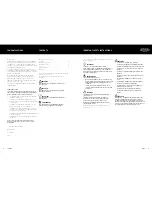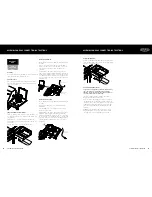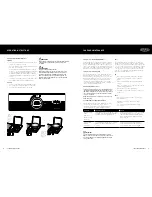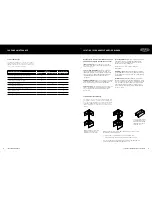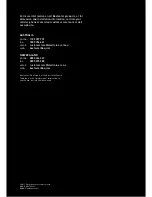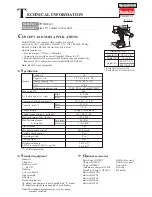
8
9
CARE AND MAINTENANCE
CARE AND MAINTENANCE
Service and maintenance
This appliance should be checked and serviced by an
authorised service person every 2 years to ensure the
appliance remains in a safe operation condition. These
services are not covered by warranty.
SERVICE AND MAINTENANCE
FREQUENCY
BY AUTHORISED
EACH USE
EVERY SIX MONTHS
EVERY SIX MONTHS
Check gas supply hose(s) for cracks and leaks
✓
Check gas regulator for leaks
✓
Check that all gas fittings are tight
✓
Clean and inspect burner
✓
Clean and inspect gas injector
✓
Check the gas control valve on the cylinder
✓
Inspect ignition system
✓
Inspect gas control valve
✓
LOCATING YOUR BARBECUE AND SIDE BURNER
Most importantly, this is an outdoor appliance. Ensure it is
positioned safely away from anything that can catch fire.
Indoor Use Only: Under no circumstances is this side
burner to be used indoors. This includes garages or any
other enclosed area.
Clearance From Combustibles: Ensure the side burner
remains at a distance of at least 45cm (18”) from any
combustible material such as wood, gyprock, paper and
plants. Do not store combustible materials, gasoline or
flammable liquids or vapours within 45cm (18”) of
the appliance.
Adequate Ventilation: Ensure there is adequate ventilation
for the appliance and cylinder. This is required not only for
proper combustion, but also to prevent gas build up.
Firm Level Surface: Use your barbecue only on a firm level
surface. This appliance is not designed for recreational
vehicles, and shall not be installed on a boat or any
marine craft.
Protection From Weather: Keep the side burner protected
from adverse weather, including rain and high winds.
Polyvinyl covers are available that have been specially
designed for this range of barbecues.
Allow clear access to the entire gas supply hose
and regulator.
Maintenance Access: When your side burner is installed,
you should be able to access the gas supply line including
the gas piping or hose, gas regulator, gas cylinder and any
shut off valves.
Partial Enclosures: Many backyards have areas that are
partially closed off, such as balconies and pergolas. In some
cases, it is hard to decide whether these partially enclosed
areas should be classified as indoor areas, particularly in
terms of permanent (non-closable) ventilation. The gas
safety authorities have agreed on the definition of partial
enclosures below.
Partial Enclosures (Australia Only)
This appliance shall only be used in an above ground, open
air situation with natural ventilation, without stagnant areas,
where gas leakage and products of combustion are rapidly
dispersed by wind and natural convection. Any enclosure
in which the appliance is used shall comply with one of the
following:
Within a partial enclosure that
includes an overhead cover
and no more than two walls.
Any enclosure with walls
on all sides, but at least
one permanent opening
at ground level, and no
overhead cover.
Within a partial enclosure that includes an overhead cover and more than
two walls, the following shall apply:
• At least 25% of the total wall area is completely open; and
• at least 30% of the remaining wall area is open and unrestricted.
In the case of balconies, at least 20% of the total of the side, back and front
wall areas shall be and remain open and unrestricted.
LOCATING YOUR BARBECUE AND SIDE BURNER


